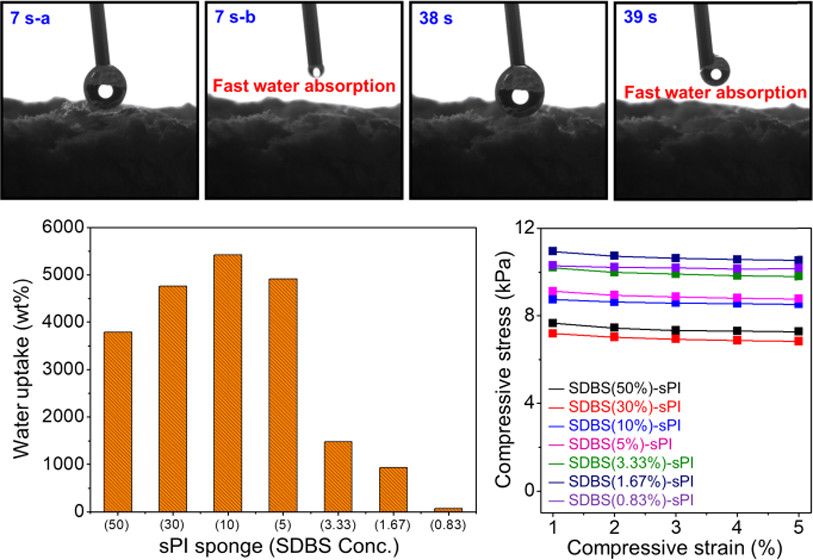News
Ultralight, structurally stable electrospun sponges with tailored hydrophilicity as a novel material platform
02.07.2020
Cheong, Jun Young ; Mafi, Mahsa ; Benker, Lothar ; Zhu, Jian ; Mader, Michael ; Liang, Chen ; Hou, Haoqing ; Agarwal, Seema ; Kim, Il-Doo ; Greiner, Andreas
ACS Applied Materials & Interfaces. (2020) https://doi.org/10.1021/acsami.0c03103

Sponges based on short electrospun fibers have received significant attention due to their ultrahigh porosity, lightweight, and multifunctional characteristics. In particular, polyimide (PI) sponges have been researched due to their exceptional mechanical properties and thermal stability. Nevertheless, a number of sponges, including PI, are usually hydrophobic and synthesized in toxic, nonwater solvents (e.g., 1,4-dioxane). Conversely, hydrophilic sponges disintegrate upon contact with water. Here, we suggest a new strategy to fabricate PI sponges in water by introducing a suitable surfactant, sodium dodecylbenzenesulfonate (SDBS) (sPI sponges). With less than 1 wt % of SDBS with respect to PI short fibers, they can be homogeneously dispersed in water and mixed well with poly(amic acid) (PAA) solution. The synthesized sponge, depending on the concentration of SDBS, showed hydrophilic properties and substantial water uptake above 5000%. The hydrophilic properties of the sponges, which are not common, and the preparation from aqueous solution introduce new research opportunities. Such hydrophilic sponges are particularly special because they do not swell in contact with water, which makes them dimensionally stable. The methods presented here can serve as a milestone for the future development of various kinds of hydrophilic sponges applied for various applications, ranging from tissue engineering to oil/water separation.

